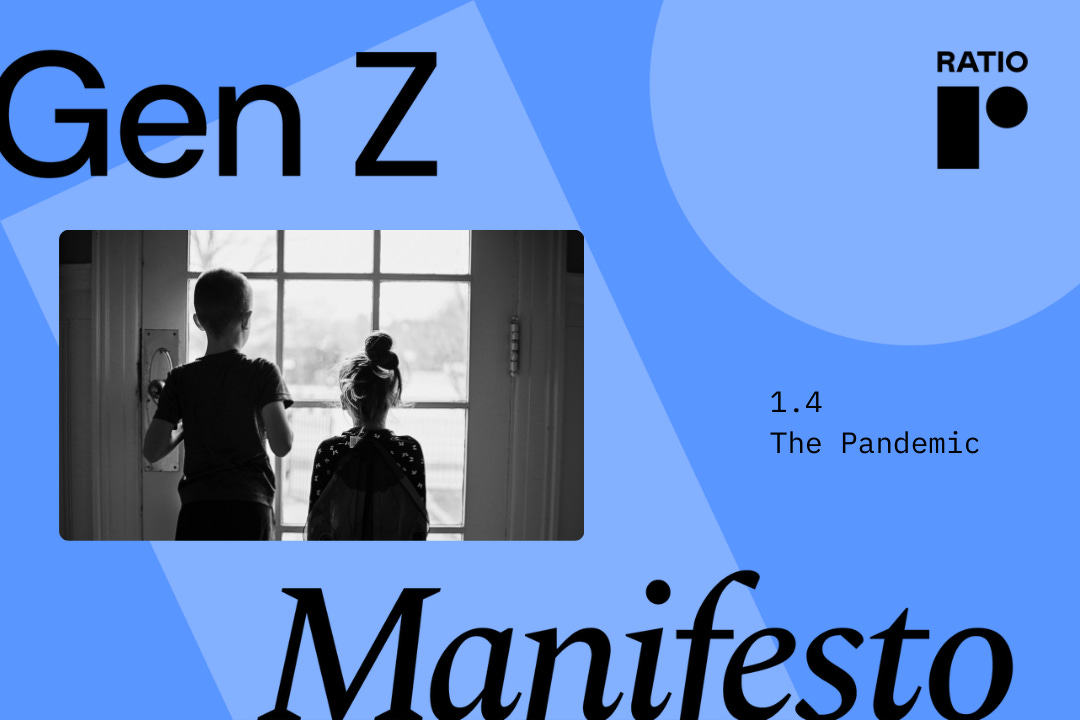Week 4: The Pandemic
Progress in educational performance stalls
We are exploring the social, cultural and economic factors that help define Generation Z. In the last post we considered parents and state’s diminishing appetite for risk. In this post, we look at the Covid-19 pandemic.
Gen Z were the first generation for a century to experience a global pandemic as children. Few suffered Covid’s assault on physical health. The number of childhood deaths in the U.K. is measured in hundreds not thousands.1 In the U.S., of the million or so deaths, only 1,300 were of children or young people.2 (The Spanish Flu of 1918 was less sparing of children, especially infants).
Nonetheless, Gen Z made sacrifices for the sake of the health of others, particularly the elderly. They were kept out of school. They did their lessons online at home. And like everyone else, their face to face social life was hugely disrupted for extended periods.
Yesterday, we cross posted Sam Friedman’s excellent piece based on his research for the Sutton Trust.3 Over the last two decades, England has progressed from mid-table in the international leagues of educational performance to challenging for top place.
In the piece Friedman reveals the loss of momentum post Covid. The highly respected Institute for Fiscal Studies goes further and suggests that the pandemic hangover threatens the progressive trend.4 The regression is felt across G7 nations, and the situation for children and young people in Scotland, Wales and Northern Ireland is worse than in England.
The primary problem is school absence. Stephen Gibbons and colleagues at the LSE5 show that the number of children missing a day of school per fortnight rose from eight per cent in 2019 to 34 per cent in 2021, and those missing two days per week is up from 0.2 per cent to 2.3 per cent.
The situation may be worse. Kiran Gill and colleagues at IPPR6 refer to ‘internal truancy’ where children arrive at school but not in class. They put the days lost in 2022/23 academic year at 32 million, up from nine million prior to Covid in 2018/19.
So what is going on? Gibbons and colleagues hypothesise changing attitudes towards school to be part of the problem. Fewer parents and pupils see missing time in class as a significant risk to a good education.
Katheryn Lester and Daniel Michelson7 at the University of Surrey find that a proportion of pupils deal with anxiety and other mood disorders by avoiding school. They give this phenomenon a name: emotionally-based school avoidance or EBSA.
Gill and colleagues ask why suspensions and exclusions of pupils has risen by a fifth post Covid.
A common theme runs through each of these studies. Living in under resourced communities makes matters worse. England maybe rising up the international league of educational performance, but the gap between rich and poor pupils remains the same as it did two decades ago. Missing school, being suspended from school, and exclusions from school are all higher for the economically disadvantaged than for those from better off homes.
2 Flaxman S, and colleagues, Assessment of COVID-19 as the underlying cause of death among children and young people aged 0 to 19 Years in the US. JAMA Netw Open. 2023;6(1):e2253590. doi:10.1001/jamanetworkopen.2022.53590
3 Friedman, S., Lessons Learnt? Reflecting on 20 years of School Reform in England, Sutton Trust, 2024. Available at: https://www.suttontrust.com/our-research/lessons-learnt/
4 Farquharson, C. and colleagues, The state of education: what awaits the next government?. Institute for Fiscal Studies, 2024. Available at: https://ifs.org.uk/publications/state-education-what-awaits-next-government
5 Gibbons, S. and colleagues, Overview: The pandemic, pupil attendance and achievement, LSE, 2024. Available at: https://cep.lse.ac.uk/pubs/download/special/cepsp45.pdf
6 Gill, K. and colleagues, Who is losing learning? The case for reducing exclusions across mainstream schools, IPPR, 2024. Available at: https://www.ippr.org/articles/who-is-losing-learning
7 Lester K. And Michelson, D., Perfect storm: emotionally based school avoidance in the post-COVID-19 pandemic context,
BMJ Mental Health 2024; 27:e300944.




